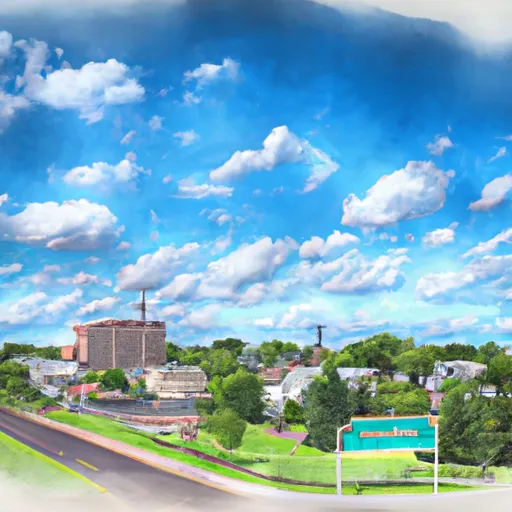-
 Snoflo Premium
Snoflo Premium
Get unlimited access to all our content
With no Ad interruptions! - Start Your Free Trial Login with existing account
Stacy
Eden Index
Climate
6.4
•
Recreation
3.7
•
Community
•
Safeguard
3.8/10

Stacy, Minnesota is a small town located in Chisago County, with a population of approximately 1,500 residents. The town experiences a continental climate, characterized by warm summers and cold winters. Summers are generally mild with temperatures ranging from the 70s to low 80s°F, while winters can be harsh with temperatures dropping well below freezing, often accompanied by significant snowfall.
The hydrology constituents in Stacy are influenced by the nearby Sunrise River, which flows through the town. The river provides opportunities for fishing and canoeing, with species such as walleye, northern pike, and smallmouth bass attracting anglers. Additionally, there are several small lakes in the area, including Skogman Lake and Goose Lake, offering further recreational activities like boating and swimming during the warmer months.
Stacy boasts abundant outdoor recreation opportunities for nature enthusiasts. The town is surrounded by beautiful woodlands, making it ideal for hiking, birdwatching, and wildlife observation. The nearby Wild River State Park, which spans over 7,000 acres, offers even more extensive opportunities for camping, cross-country skiing, horseback riding, and snowshoeing. With its scenic landscapes and diverse natural resources, Stacy provides residents and visitors alike with a variety of outdoor activities to enjoy throughout the year.
What is the Eden Index?
The Snoflo Eden Index serves as a comprehensive rating system for regions, evaluating their desirability through a holistic assessment of climate health, outdoor recreation opportunities, and natural disaster risk, acknowledging the profound impact of these factors on livability and well-being.
Climate Health Indicator (CHI): 6.4
Stacy receives approximately
812mm of rain per year,
with humidity levels near 84%
and air temperatures averaging around
7°C.
Stacy has a plant hardyness factor of
4, meaning
plants and agriculture in this region thrive during a short period during spring and early summer. Most
plants will die off during the colder winter months.
By considering the ideal temperature range, reliable water supplies, clean air, and stable seasonal rain or snowpacks, the Climate Health Indicator (CHI) underscores the significance of a healthy climate as the foundation for quality living.
A healthy climate is paramount for ensuring a high quality of life and livability in a region, fostering both physical well-being and environmental harmony. This can be characterized by ideal temperatures, reliable access to water supplies, clean air, and consistent seasonal rain or snowpacks.
Weather Forecast
Streamflow Conditions
St. Croix
Area Rivers
St. Croix
Snowpack Depths
St. Croix
Reservoir Storage Capacity
St. Croix
Groundwater Levels
Recreational Opportunity Index (ROI): 3.7
The Recreational Opportunity Index (ROI) recognizes the value of outdoor recreational options, such as parks, hiking trails, camping sites, and fishing spots, while acknowledging that climate plays a pivotal role in ensuring the comfort and consistency of these experiences.
Access to outdoor recreational opportunities, encompassing activities such as parks, hiking, camping, and fishing, is crucial for overall well-being, and the climate plays a pivotal role in enabling and enhancing these experiences, ensuring that individuals can engage in nature-based activities comfortably and consistently.
Camping Areas
| Campground | Campsites | Reservations | Toilets | Showers | Elevation |
|---|---|---|---|---|---|
| Woodenfrog - Kabetogama State Forest | 60 | 1,126 ft | |||
| Wallashuck - Red Rock Lake | 80 | 833 ft | |||
| Whitebreast - Red Rock Lake | 130 | 828 ft | |||
| McCarthy Beach State Park | 90 | 1,393 ft | |||
| Roberts Creek Park | None | 803 ft | |||
| North Overlook - Red Rock Lake | 55 | 796 ft | |||
| Willow River - Gen Andrews State Forest | 38 | 1,048 ft | |||
| Elk Rock State Park | 75 | 843 ft | |||
| Howell Station - Red Rock Lake | 140 | 704 ft | |||
| Ivans - Red Rock Lake | None | 708 ft |
Nearby Fishing
Nearby Ski Areas
Catastrophe Safeguard Index (CSI):
The Catastrophe Safeguard Index (CSI) recognizes that natural disaster risk, encompassing floods, fires, hurricanes, and tornadoes, can drastically affect safety and the overall appeal of an area.
The level of natural disaster risk in a region significantly affects safety and the overall livability, with climate change amplifying these risks by potentially increasing the frequency and intensity of events like floods, fires, hurricanes, and tornadoes, thereby posing substantial challenges to community resilience and well-being.
Community Resilience Indicator (CRI):
The Community Resilience Indicator (CRI) recognizes that education, healthcare, and socioeconomics are crucial to the well-being of a region. The CRI acknowledges the profound impact of these elements on residents' overall quality of life. By evaluating educational resources, healthcare accessibility, and economic inclusivity, the index captures the essential aspects that contribute to a thriving community, fostering resident satisfaction, equity, and social cohesion.

